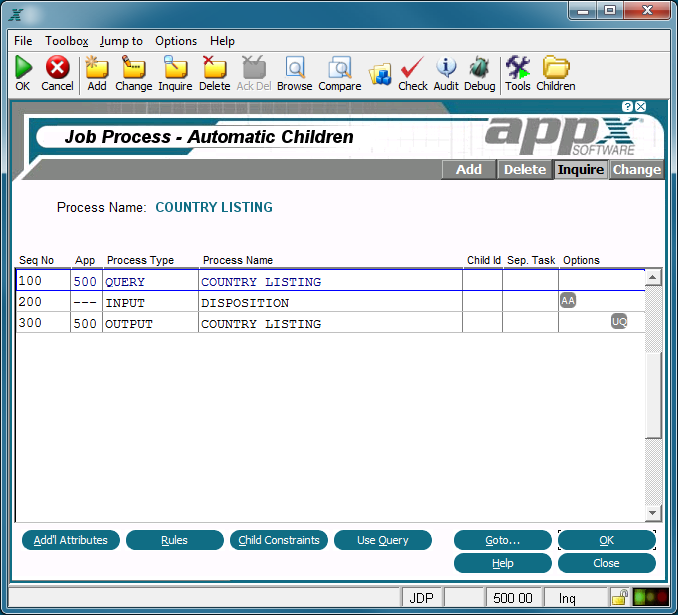Chapter 3-5: Job Processes |
Job Process Automatic Child Processes A job consists of a series of Automatic Child Processes that are executed sequentially. These processes are defined using the overlay shown below. For more information regarding Automatic Child Processes and the options available on this overlay, see the chapter Automatic and Optional Child Processes.
Automatic Child Processes Overlay For Jobs |
Application Design Manual "Powered by Appx Software"1091 ©2006 By APPX Software, Inc. All Rights Reserved |
